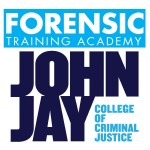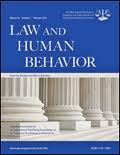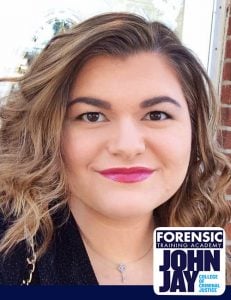 Adults, both professionals and laypersons alike, are generally no better than chance at detecting deception in children. This is the bottom line of a recently published article in Law and Human Behavior. Below is a summary of the research and findings as well as a translation of this research into practice
Adults, both professionals and laypersons alike, are generally no better than chance at detecting deception in children. This is the bottom line of a recently published article in Law and Human Behavior. Below is a summary of the research and findings as well as a translation of this research into practice
 Featured Article | Law and Human Behavior | 2017, Vol. 41, No. 1, 44-54
Featured Article | Law and Human Behavior | 2017, Vol. 41, No. 1, 44-54
Detecting Deception in Children: A Meta-Analysis
Author
Jennifer Gongola, Department of Psychology and Social Behavior, University of California, Irvine
Nicholas Scurich, Department of Psychology and Social Behavior and Department of Criminology, Law and Society, University of California, Irvine
Jodi A. Quas, Department of Psychology and Social Behavior, University of California, Irvine
Abstract
Although research reveals that children as young as 3 can use deception and will take steps to obscure truth, research concerning how well others detect children’s deceptive efforts remains unclear. Yet adults regularly assess whether children are telling the truth in a variety of contexts, including at school, in the home, and in legal settings, particularly in investigations of maltreatment. We conducted a meta-analysis to synthesize extant research concerning adults’ ability to detect deceptive statements produced by children. We included 45 experiments involving 7,893 adult judges and 1,858 children. Overall, adults could accurately discriminate truths/lies at an average rate of 54%, which is slightly but significantly above chance levels. The average rate at which true statements were correctly classified as honest was higher (63.8%), whereas the rate at which lies were classified as dishonest was not different from chance (47.5%). A small positive correlation emerged between judgment confidence and judgment accuracy. Professionals (e.g., social workers, police officers, teachers) slightly outperformed laypersons (e.g., college undergraduates). Finally, exploratory analyses revealed that the child’s age did not significantly affect the rate at which adults could discriminate truths/lies from chance. Future research aimed toward improving lie detection accuracy might focus more on individual differences in children’s lie-telling abilities in order to uncover any reliable indicators of deception.
Keywords
Child interviewing, deception, lie detection, forensic evaluation
Summary of the Research
“A sizable body of research has evaluated how well children can actually maintain lies. Evidence indicates, for example, that even relatively young children can maintain at least some types of lies, particularly those that involve denying an event rather than alleging a falsehood. At the same time, however, leakage, defined as verbal or nonverbal indicators of deception, is quite common at young ages. With age, children’s ability to maintain a cogent lie, the range of types of lies (e.g., polite or prosocial and instrumental or antisocial) children produce, and children’s ability to control leakage while lying all increase” (p. 45).
“In a range of decision-making domains, the overconfidence effect, in which the levels of accuracy achieved are typically too low to justify the high levels of confidence reported by participants, has been empirically supported. We would expect, then, that adults will usually be confident in their judgments of children’s statements as well. However, adults may be able to pick up on children’s difficulty masking behavioral indicators of deception, which should increase their accuracy and confidence concurrently” (p. 45).
“Because young children have limited cognitive capacity, working memory, and executive functioning skills than older children, younger children are likely to be particularly adversely affected by the cognitive demands of lying, leading to high levels of leakage…. Insofar as adults pick up on these cues, adults should be best at detecting deception in younger children, or at least better compared to older children and adolescents. On the other hand, such a possibility assumes that adults actually know which behaviors are indicative of deception in children” (p. 45).
“To be included in the analyses, studies must have had adult participants (herein ‘receivers’) making judgments about the veracity of children’s honest and dishonest statements (herein ‘senders’) without assistance from detection aids (e.g., criteria-based content analysis [CBCA] or polygraphy)…. Studies were excluded if they were manipulating facial expressions only (e.g., no volume)…. Other inclusion criteria were as follows: We operationalized child senders as age 17 or under. Thus, we excluded studies in which receivers only judged adult senders” (pp. 46-47).
“From each study, the following variables were coded (when possible): (a) number of (adult) receivers, (b) number of (child) senders, (c) receiver’s professional status, (d) lie type (i.e., false report or false denial), (e) method for generating lies, and (f) transgression type (i.e., child’s transgression, other’s transgression, or no transgression)” (p. 47).
“We began with a computer-based search using PsycINFO, ProQuest, EBSCO, WorldCat, PsycLit and Google Scholar search engines for studies published prior to September 2015 with keywords accuracy, judgment, detect, child, deception, false statements, lie, or truth, along with several variants and conjunctions of these terms. Once relevant studies were identified, their reference sections were examined for other relevant studies; the reference section of numerous nonempirical articles was also examined for potentially relevant studies” (p. 47).
“This process yielded 45 eligible experiments, of which 40 were published and 5 were unpublished. The earliest was dated 1989, and half were from 2007 or later. These studies included a total of 7,893 adult receivers and 1,858 child senders whose ages ranged from 3 to 15. Twelve experiments used some type of ‘professional receiver,’ which could be a classroom teacher, social worker, police officer, customs officer, clinician, researcher/psychologist, early education specialist, court judge, prosecutor, or other justice system professional. The majority of studies examined accuracy at detecting false reports (28 experiments) rather than false denials (13 experiments), while 4 used both types of lies” (p. 47).
“Forty-three experiments reported a mean percentage correct (two studies did not report an overall rate, only the comparison to chance statistic). Across these, the unweighted mean percent correct was 54.34% and the weighted mean was 53.97%, with a range of 32% to 68% and a median percentage of 55%. Comparisons of the observed accuracy rate to chance (45 effect sizes, n = 7,893) revealed levels in performance at detecting true and false statements greater than chance” (p. 47).
“Analyses directly comparing the accuracy of classifying false statements as dishonest to chance was nonsignificant, indicating that, across all studies, receivers performed at chance when classifying false statements as dishonest” (p. 47).
“This difference [between the average effect sizes for detecting truths and detecting lies] was significant and revealed that adults showed greater detection performance when judging truths compared to lies” (p. 49).
“Higher confidence was associated with a higher rate of accuracy (i.e., calling a false statement dishonest and calling a true statement honest)” (p. 49).
“A subgroup analysis directly comparing the accuracy of professionals and laypersons revealed that the average effect sizes did significantly differ, with professionals outperforming lay decision makers, albeit only slightly” (p. 49).
“Across the 5 studies that compared adult detection accuracy rates among all three young, middle, and older groups of children, adults were more accurate only with the youngest age group relative to the oldest age group” (p. 50).
“Consistent with the literature examining deception detection in adult senders, higher accuracy was detected when classifying children’s true statements as such than when classifying lies as such. One possible explanation for this involves a type of anchoring, in which most people believe that social interactions are honest and often fail to sufficiently adjust this inclination, thus resulting in a bias toward their initial position. In this case, the predisposition would be that children are truthful. When judging deceptive statements by children, however, adults’ performance did not differ from chance, and this performance did not vary depending on whether the statement reflected a false report or false denial” (p. 50).
Translating Research into Practice
“Overall, these levels of accuracy and tendency toward a response bias have important implications for individuals who are charged with the difficult task of evaluating the veracity of children’s statements, particularly individuals who do so in forensic settings. These professionals need to be informed of their potential limitations, and that they ought not to place too much faith in their ability to detect deception in children but instead, when situations are warranted, to consider possibilities of both honest and dishonest statements, both in terms of true and false allegations and also true and false denials” (p. 50).
“Although we can tentatively conclude that adults are more confident in their decisions when they have made a correct classification, we do not advise that adult receivers use confidence as a strong cue for accuracy; the relation between confidence and accuracy is meager at best” (p. 50).
“Adults need to be trained to code interview transcripts for CBCA. Thus, perhaps, with sufficient training on a coding scheme like CBCA, and assuming such a scheme is effective at truly discriminating among honest and dishonest reports from children, larger differences between laypersons and professionals would emerge” (p. 51).
Other Interesting Tidbits for Researchers and Clinicians
“There are likely to be a number of moderators (e.g., gender of child sender; type of lie; high or low stakes; etc.) that might interact with the age of sender; these interactive effects could influence both the ability of the child to deceive as well as the ability of an adult to detect that deception. For instance, developmental differences in children’s scores have been found on several of the criteria embedded in CBCA [content-based criterion analysis] coding, with higher scores indicative of increased likelihood of a truthful report, being positively related to age” (p. 51).
“The current meta-analysis found no significant differences in adult’s average accuracy rates when children received adult assistance in the form of coaching compared to children generating their own lies, nor did accuracy rates differ between lies about a transgression (either their own or witnessing another person) and lies about common day-to-day events” (p. 51).
“Studies of interest are those that uncover any reliable indicators of deception in children or positive influences on honest disclosures. For example, interview strategies such as rapport building and reassurance can have positive effects on children’s truth-telling behavior…. Many of the studies included in this meta-analysis only asked the children direct yes or no questions that resulted in interviews only seconds long…. Comparing question types, interview length, narratives versus forced choice, and formal versus informal interview styles could shed light on factors that affect accuracy, particularly across age, given the dramatic effects that children’s age has on their responses to different question types…. Continuing to shift to a within-sender focus and determining individual differences that influence their detectability would add significant insight into how detection abilities can be improved” (p. 52).
Join the Discussion
As always, please join the discussion below if you have thoughts or comments to add!







